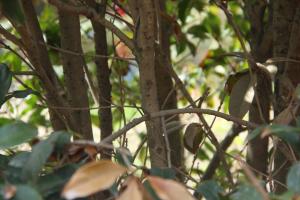When to Plant a Magnolia Tree in Zone 6a
If you live in USDA hardiness zone 6a and are considering planting a magnolia tree in your garden, timing is key. Magnolias are hardy trees that thrive in a range of climates, but there are certain conditions that are best for planting.
Choosing the Right Time of Year
The best time to plant a magnolia tree in zone 6a is typically in the fall or early spring. In the fall, planting should be done no later than six weeks before the first frost. This allows the tree to establish roots before the winter season sets in. Early spring planting should be done before buds begin to appear on the tree. Avoid planting during mid-summer, as this can cause heat stress on newly planted trees.
Preparing the Soil
To ensure a healthy magnolia tree, it is important to prepare the planting area properly. The soil should be well-draining, as magnolias do not tolerate standing water. The pH level of the soil should be neutral to slightly acidic, ideally between 6.0-7.0. A soil test can be done to determine the pH level and necessary amendments can be made accordingly. Additionally, it's important to amend the soil with organic matter, such as compost or peat moss, to improve soil fertility and structure.
Choosing the Right Location
When selecting a location for your magnolia tree, consider the tree's mature size and growth habit. Magnolias can grow quite large, so it's important to plant in a location with ample space for growth. Additionally, consider the amount of sun exposure the tree will receive. Magnolias thrive in full sun to partial shade, so select a location that receives at least six hours of direct sun per day. Finally, consider the tree's proximity to other nearby plants or structures. Magnolia trees have a spreading growth habit and can crowd out nearby plants if not given enough space.
Care and Maintenance
After planting your magnolia tree, it's important to provide proper care and maintenance. Water the tree deeply and regularly, especially during periods of drought, to ensure adequate moisture for root growth. Additionally, adding a layer of mulch around the base of the tree can help retain moisture and suppress weed growth. Prune the tree as needed to remove dead or diseased branches and to shape the tree's growth. Finally, fertilize the tree annually in the early spring with a slow-release fertilizer formulated for acid-loving plants.
By following these guidelines for planting and caring for your magnolia tree, you can enjoy the beauty and fragrance of this beloved tree for years to come.

 how many times do yo...
how many times do yo... how many planted tre...
how many planted tre... how many pine trees ...
how many pine trees ... how many pecan trees...
how many pecan trees... how many plants comp...
how many plants comp... how many plants can ...
how many plants can ... how many plants and ...
how many plants and ... how many pepper plan...
how many pepper plan...































